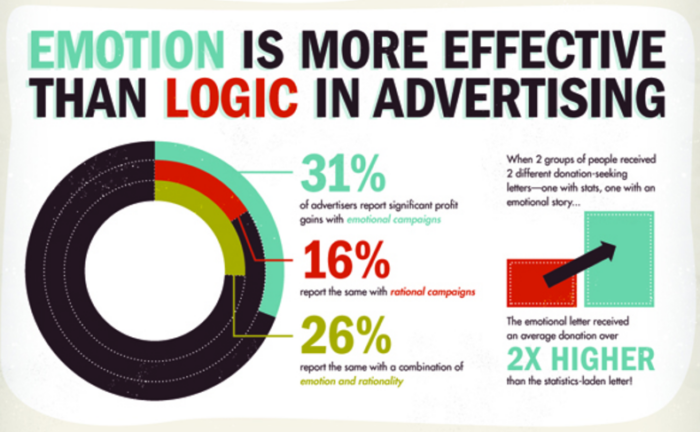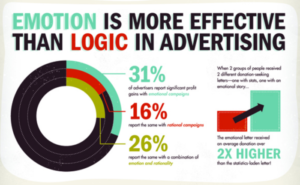What Is Emotional Marketing & How It Works?
Abex Technologies is here to guide you through all aspects of “What is Emotional Marketing & How it Works?” So get your tissues, grab your computer, and start emotional marketing with us!

Link: https://images.app.goo.gl/x5j1ohQ2Xj6Q4vfb6
You must always remember Maya Angelou’s words: “People will forget what you said, people will forget what you did, but people will never forget how you made them feel.”
What is Emotional Marketing?
Emotional marketing is a strategy that uses emotions like happiness, sadness, anger, or fear to drive consumer behavior. It aims to create an emotional bond between a brand and its audience by appealing to the emotions that resonate most with them. 60% of customers are more likely to buy from brands they feel emotionally connected to~ Capgemini
This type of marketing isn’t just about making people feel something for the sake of it; it’s about building emotional connections—connections that form long-term loyalty and brand advocacy.
Why is it important to perform emotional marketing for your brand?
Emotions play a huge role in decision-making, whether one realizes it or not. Gerald Zaltman found that 95% of the decisions people make while buying something are subconscious. This means that they are often driven by emotional responses rather than logic. So, a brand that targets people’s emotions is more likely to see sales than a brand that uses traditional marketing methods.

Link:https://images.app.goo.gl/ixPvXSoK6CrmRZ5m6
You might not buy something from a bright, shiny poster, but an ad that shows something you dearly love (let’s say kittens with big eyes) will immediately capture your attention towards the product. The result of all this might be you end up buying that product even if it’s of no use to you.
This highlights the importance of emotional marketing value in capturing the attention and loyalty of customers.
| Emotional Marketing Benefits | Explanation |
| Builds Brand Loyalty | Customers who feel an emotional connection to a brand are more likely to stay loyal and advocate for the brand. |
| Increases Engagement | People engage with content that triggers some kind emotions. |
| Boosts Conversion Rates | Emotional triggers can prompt consumers to act faster, increasing conversions. |
| Encourages Social Sharing | Emotionally engaging content is more likely to be shared across social media platforms. |
The purpose of emotional marketing is to build a deeper relationship with customers, helping them associate positive or impactful emotions with the brand. Whether it’s happiness, nostalgia, or a sense of belonging, emotional marketing ensures that a brand is memorable and meaningful in the customer’s mind.
One way to do this is by establishing a clear brand identity. Emotional marketing helps define who a brand is, what it stands for, and why it should matter to the consumer.
Another critical purpose is to create a positive brand image. By aligning with the emotions that matter most to the audience, brands can shape a more favorable reputation. Additionally, emotional marketing differentiates brands from competitors. While product features can be replicated, emotional connections are much harder to duplicate.
Finally, emotional marketing is designed to evoke actions like making a purchase or sharing content. Emotional triggers prompt consumers to act, increasing the chances of conversion.
Take some emotional marketing examples in India.
Cadbury’s “Kuch Meetha Ho Jaaye” campaign builds an emotional connection around happiness and celebrations. They focus their ads on happiness and togetherness, which builds an emotional connection by associating the product with moments of joy and celebration.
How does Emotional Marketing work?
Emotional marketing starts with understanding the audience. The first step is researching and identifying what emotions resonate most with your target market. This could be joy, fear, nostalgia, or any other emotion that drives their decision-making process. Once you have a clear understanding, the next step is to identify the emotional triggers.

Link: https://images.app.goo.gl/1RcUjW1PquMjR3XF8
These are the specific feelings or desires that your product or service can fulfill. Once those triggers are identified, you can move on to crafting a compelling message that connects with the audience emotionally. Then, you create engaging content that uses visuals, music, and storytelling to amplify that emotional appeal. Lastly, emotional marketing campaigns should be tested and analyzed. You can refine your campaigns using tools like the emotional marketing value headline analyzer to ensure they effectively connect with your audience.
Let’s simplify it for you:
| Step | Explanation |
| Understanding the Audience | Start by researching your target audience to understand what emotions drive them. |
| Identifying Emotional Triggers | Find out what emotional needs or desires your audience has and how your product can meet them. |
| Crafting the Message | Develop a compelling story that connects emotionally with the audience. |
| Creating Engaging Content | Use visuals, music, and storytelling to create a memorable experience. |
| Testing & Analyzing | Test your campaigns and use tools like an emotional marketing value headline analyzer to refine them. |
Integrating Emotional Marketing with Digital Marketing
Emotional marketing plays a huge role in digital marketing today. It’s not just about pushing products anymore; it’s about making real connections. Take content marketing, for example. Instead of just writing about features, you can share stories, blog posts, or videos that tap into emotions.

Link: https://images.app.goo.gl/tXEidfTCfeFTmxkP8
On social media, people are more likely to like, share, or comment when they feel something. Stories and visuals that strike an emotional chord usually get more attention. Even email marketing benefits from this. If you craft subject lines and messages that resonate emotionally, your audience is more likely to open up and engage with them. And then there’s video marketing — videos are a fantastic way to tell stories that get people feeling something.
If you weave emotional marketing into your digital marketing services, you’ll see stronger connections, more loyalty, and better results. It’s not just about selling but about building a bond with your customers.
To know more about digital marketing, read our blog:
Why is Digital Marketing Important for Small Businesses?
What Is Digital Marketing: Its Types and Benefits
Want to get good at this? Taking a digital marketing course can help you learn how to mix emotional marketing with other strategies in digital marketing. It’s a skill worth mastering if you want to make a lasting impact.
I hope this helps! Abex Technologies is here to promote your brand using the right emotional marketing techniques with a touch of digital marketing. So, what’s the wait for?
Call Abex Technologies today and get your business sly high with our professional digital marketing service today!
FAQ’s
1. What is emotional marketing?
Emotional marketing is a strategy that uses emotions like happiness, fear, or nostalgia to connect with customers and influence their buying decisions.
2. Why is emotional marketing important for my brand?
It helps your brand build deeper connections with customers, making them more likely to stay loyal and engage with your products or services.
3. How does emotional marketing work?
It starts with understanding your audience’s emotions, identifying what drives them, and then creating content that speaks to those emotions.
4. Can emotional marketing help with digital marketing?
Yes, emotional marketing strengthens digital marketing by creating more engaging and memorable content, increasing customer loyalty and social sharing.
5. Are there any emotional marketing examples in India?
Yes, campaigns like Cadbury’s “KuchMeetha Ho Jaaye” are great examples. They connect emotions like happiness and togetherness with their brand.
6. How can I get started with emotional marketing?
You can start by understanding your audience’s emotions, crafting a compelling message, and testing your campaigns with tools like the emotional marketing value headline analyzer.



